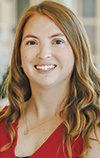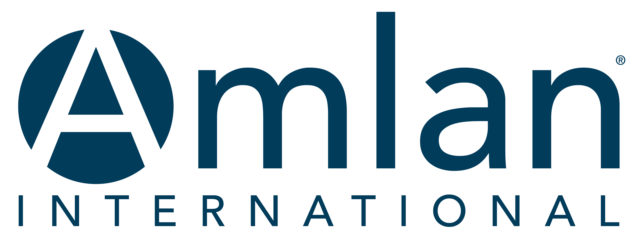Navigating an uncertain marketplace can be more successful by implementing a variety of risk management strategies best suited for the individual dairy operation, three Pennsylvania dairy producers noted during the 11th annual Dairy Financial and Risk Management Conference, hosted by the Pennsylvania Center for Dairy Excellence.
Mike Hosterman of AgChoice Farm Credit, who works with each of the three producers and moderated the panel discussion, said risk management goes beyond a common “buzzword.”
“I’ve been fortunate in my career to visit multiple states with my clients, and I believe risk management is reality,” he said. “It’s making a difference on farms. Risk management is more than insurance products – it’s a holistic approach. Risk management is part of successful dairy operations, but it takes a lot of planning. It involves developing a plan, implementing it, evaluating and adjusting on a regular basis.”
With more than 100 attendees in the audience, the producers gave an overview of their dairy operations and described how risk management strategies are used to meet their goals and protect their profits.
A cost of doing business
Mark Mosemann of Misty Mountain Dairy LLC, a 450-cow dairy in Fulton County, Pennsylvania, said his family’s risk management philosophy focuses on two areas: input and milk. For their family farm, which includes more than 750 acres of crops, the input risk is on the feed side.
“Our original strategy was to be a dairy only. We were going to custom hire and not own much machinery or land. That worked well until 2012,” Mosemann said. “The milk price wasn’t terrible, but all the purchased feed we were buying really squeezed us. Through various team meetings with consultants, we decided we needed to form a different strategy.”
His family began renting more land and performed a quality analysis to determine how to get their cost of production for various crops under what they were paying for feed in 2012. Today, they are making all their own corn silage and most of their haylage, which Mosemann says has been key to the input side of their risk management strategy.
“That has stabilized a lot of our input cost. If you look at our benchmarks over time, you can see that our purchased feed price was basically driving our balance sheet and decisions. It tied our hands at times,” he said. “We’ve worked out all of that and increased our land base, which is a bit of a different perspective on risk management.”
On the milk side, Mosemann said they almost always sign up for the Dairy Margin Coverage (DMC) program at the Tier I (5 million pounds of milk) level. They recently started using Dairy Revenue Protection (Dairy-RP) and receive weekly updates from their certified crop insurance agent regarding quarterly coverage periods. Their longest history of risk management for milk pricing has been through their co-op, which helps them lock in different options. Mosemann said that they tend to focus on Class III milk.
“We use an accountant to work out a cost of production analysis sheet to come up with a gross milk price and a final Class III price required to break even. That’s what we use to measure against what we’re trying to buy as far as protection,” he explained.
Their goal is to achieve a net price that will be above breakeven, and Mosemann views this process of risk management as a necessity. “It’s really a cost of doing business for us to make sure we’re protecting ourselves against some of the volatility we’re seeing now,” he said.
Mosemann also encouraged attendees to build relationships with individuals across the industry to share insight and get better perspectives on risk management.
“A big portion of our risk management on the feed side has been networking,” Mosemann added. “Don’t underestimate your networking capability. Spend a minute talking to a person or company to see how you can push the envelope to do better.”
Building a floor for milk prices
Glenn Kline from Y-Run Farms LLC in Bradford County, Pennsylvania, also combines a variety of tools to manage risk.. After partnering with his dad and brother on the dairy operation for years, his two sons joined the partnership in 2018. Together, they milk approximately 600 cows and farm 220 acres.
Kline participates in DMC and Dairy-RP programs and forward contracts through his co-op to keep things aligned for his cost of production. His goal is to invest in strategies that build a floor for his milk price.
“For DRP, I’m willing to spend a little more. The prices don’t scare me too bad because I just want a good floor. I look more at floor prices for DRP to try and get that floor built,” Kline said.
Despite so much uncertainty in the marketplace, Kline continues to view risk management as an important part of doing business in 2021 and maintains a forward-thinking outlook.
“Going into 2020, we thought it was going to be a really good year. We thought milk prices were going to be good, and we ended up forward contracting a lot of milk,” Kline shared. “Then COVID-19 and the negative producer price differential hit in Pennsylvania. We still forward contract and plan to in 2021 with DRP. I think that’s the right move, but we’ll see later on.”
As Kline works to build a floor for his milk price and understand his cost of production, he encouraged attendees to invest the time into understanding risk management.
“If you’re doing risk management, you have to be passionate about it. It’s something you have to sit and look at every day. It takes time, but you have to be willing to do it,” he said. “I enjoy it because my two sons are doing some of the other management tasks, so I’ve been able to focus on risk management and look at things a lot differently than I used to.”
Locking in a profit
Rodney Hissong of Mercer-Vu Farms Inc. in Franklin County, Pennsylvania, grew up milking cows on his family’s farm. When he returned after college, they broke ground on a new operation and grew the farm over the years.
One of the biggest risk management decisions his family made was in 2018 when they bought another dairy approximately 65 miles away from their home farm. Hissong said that gave them more options for crops, with the feed cost being less. The Hissongs currently milk more than 1,500 cows at their home farm and 1,200 at their second location. They farm about 5,000 acres across both locations, haul their own milk and employ about 50 full-time employees.
“It was a strategic decision when it comes to spreading risk out. We could have pushed our cow numbers at home by hauling feed and getting rid of manure within a decent distance, but anything we would have done beyond that would have stressed the system and increased our costs,” Hissong said. “That’s where the satellite location made sense. It spread our risk out as a business and spread our weather risk out, too, which is important. Our corner of Franklin County has a tendency to get dry.”
On the milk side, Hissong said he relies on quarterly accrual-based accounting to compare benchmarks and look forward. He does not currently work with a broker but works with his co-op on forward contracting and other strategies – including protecting his break-even cost.
“The first thing with any strategy is knowing your cost of production. You need to know how to protect your break-even cost in order to lock in a profit,” Hissong said. “We spend a lot of time with the numbers, and any time we’ve invested into getting to know those numbers, it has been interesting. During COVID-19, I slept a lot better knowing that a lot of our milk was already contracted.”
He advised attendees to remain adaptable when making risk management decisions and protecting their break-even costs.
“My strategy changes all the time. You’re trying to gather the information about what the market is doing and make an educated decision. It’s a balancing act to find a comfort level where you’re protected,” he said.





